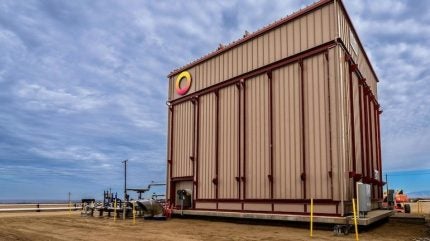
Rondo Energy has begun operation of a hundred megawatt-hour (MWh) industrial heat battery – the “world’s largest” of its kind, according to the company – at a fuel production facility in California, US.
The system produces continuous, high‑pressure steam powered entirely by on‑site wind and solar energy, offering a new model for low‑carbon, round‑the‑clock industrial heat.

Discover B2B Marketing That Performs
Combine business intelligence and editorial excellence to reach engaged professionals across 36 leading media platforms.
Commercial operation started in October 2025 after more than two months’ of automated testing verified performance and reliability. Installed without modifications to existing steam systems, the unit operates above 1,000°C with more than 97% efficiency and recorded no safety incidents during construction.
Headquartered in California, Rondo Energy develops electric thermal storage systems that store heat in durable materials such as brick and wire. The company is advancing similar projects across North America, Europe, Asia and Australia to help energy‑intensive industries cut emissions and stabilise power costs through renewable heat solutions.
How it works
Industrial heat production accounts for around one‑quarter of global energy demand, with sectors like cement, chemicals and steel depending on steady, high‑temperature processes traditionally powered by fossil fuels. Rondo’s approach enables these operations to switch to renewable energy with minimal disruption.
The system charges for roughly six hours a day using the lowest‑cost electricity available – from on‑site solar generation or from the grid during off‑peak hours. Once charged, it supplies heat or steam continuously, decoupling intermittent renewable electricity from industrial processes that need constant high‑temperature output.

US Tariffs are shifting - will you react or anticipate?
Don’t let policy changes catch you off guard. Stay proactive with real-time data and expert analysis.
By GlobalDataInside the battery, an electric current heats stacks of brick to more than 1,000°C. The stored heat is later transferred by air flow and converted into steam to feed production equipment. The design – based on non‑toxic, fire‑safe materials – requires no rare minerals and can be installed alongside existing boilers or process lines with minimal retrofitting.






